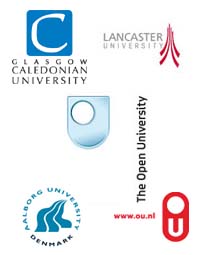

SNAPP: Realising the affordances of real-time SNA within networked learning environments
Shane Dawson
University of British Columbia, Vancouver, British Columbia, Canada
Aneesha Bakharia
University of Queensland, St Lucia, QLD, Australia
Elizabeth Heathcote
Heathcote Consulting, Wollongong, NSW, Australia
Abstract
Higher Education Institutions internationally have continued their trend for adopting increasingly sophisticated information and communication technologies (ICTs) in order to provide students with greater flexibility in their studies and more timely access to learning materials and communication tools beyond the classroom. Despite the apparent benefits these technologies bring, teaching staff are quick to note that online technologies lack the multiple student learning cues that are available through more traditional modes of education delivery (face to face). For example, observing classroom cues that assist teachers in identifying which students may require further instruction and mediation. Resources which evaluate the way students are utilising the online tools and interacting with each other have, to date, been largely neglected, thus there are limited resources for teachers to access ongoing and informal learning indicators within the online environment. As a result, the online education environment has suffered from a lack of readily available learning-progress data that can assist teaching staff in designing learning activities, and assessing and identifying individuals requiring early learning interventions.
This paper outlines the development of a tool designed to provide educators with real-time evaluative data to better support student learning. The Social Networks Adapting Pedagogical Practice (SNAPP) tool extracts student online network data and renders this information into a readily interpretable user-interface. The monitoring of student social networks has been demonstrated to assist educators in identifying instances of learner isolation (McDonald, Stuckey, Noakes, & Nyrop, 2005), creativity (Burt, 2004), and community formation (Dawson, 2008; De Laat, Lally, Lipponen, & Simons, 2007). The ability to view social graph structure and community evolution is crucial to successful facilitation and serves as an early indicator of the success of a learning activity design as well as information about student participation and potential performance. The lack of real-time analysis and visualisation tool integration within current Learning Management Systems has hindered the update of SNA and left its potential as a diagnostic tool unrealised. This paper argues for the need for real-time social graph visualisation, describes the design principles behind the development of SNAPP and highlights the key participant and community structural patterns that SNAPP allows forum facilitators to visualise.
| About NLC | Welcome Messages| Acknowledgwments | Conference Proceedings| Keynote Speakers| Index of Presenting Authors| Contact |